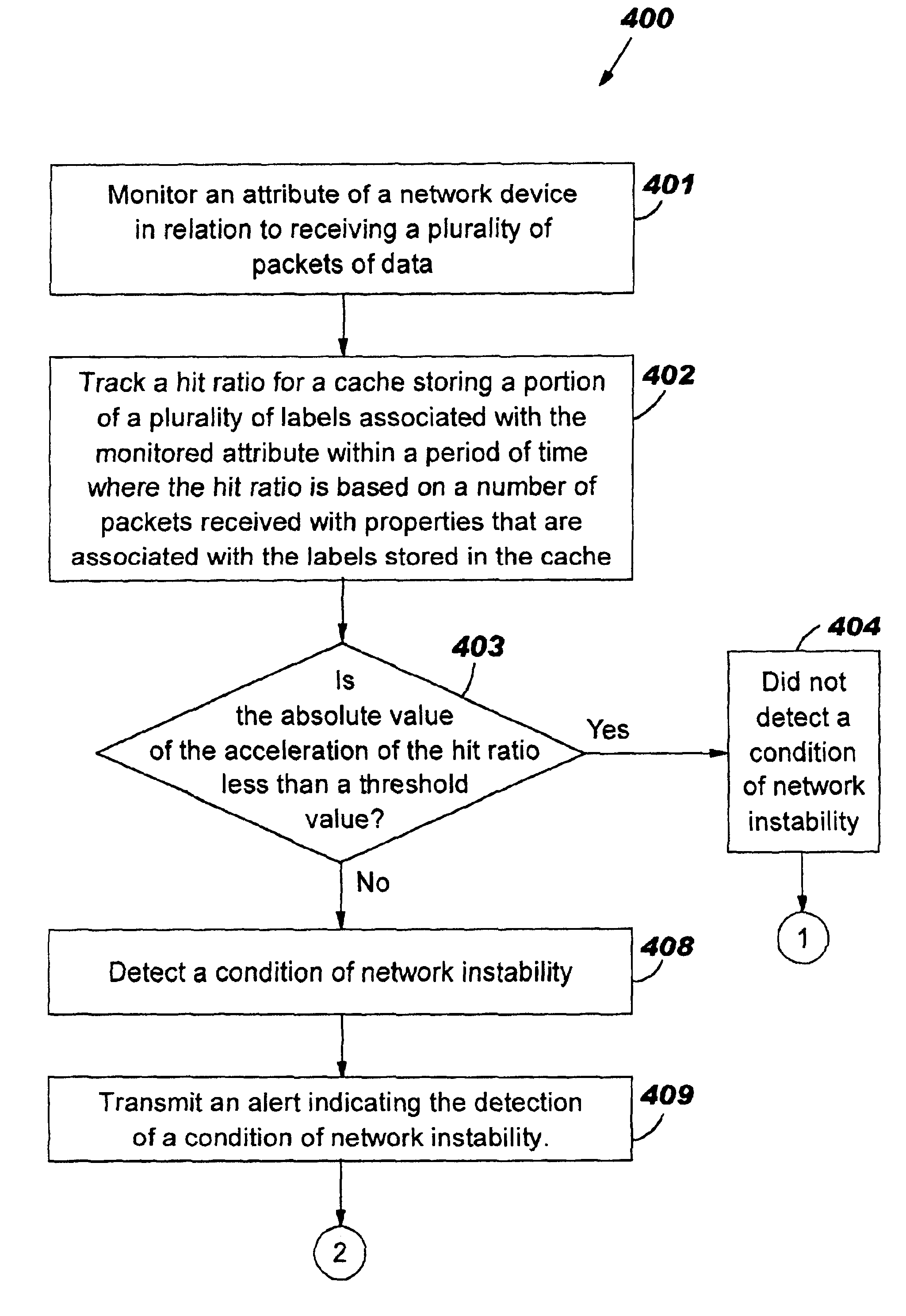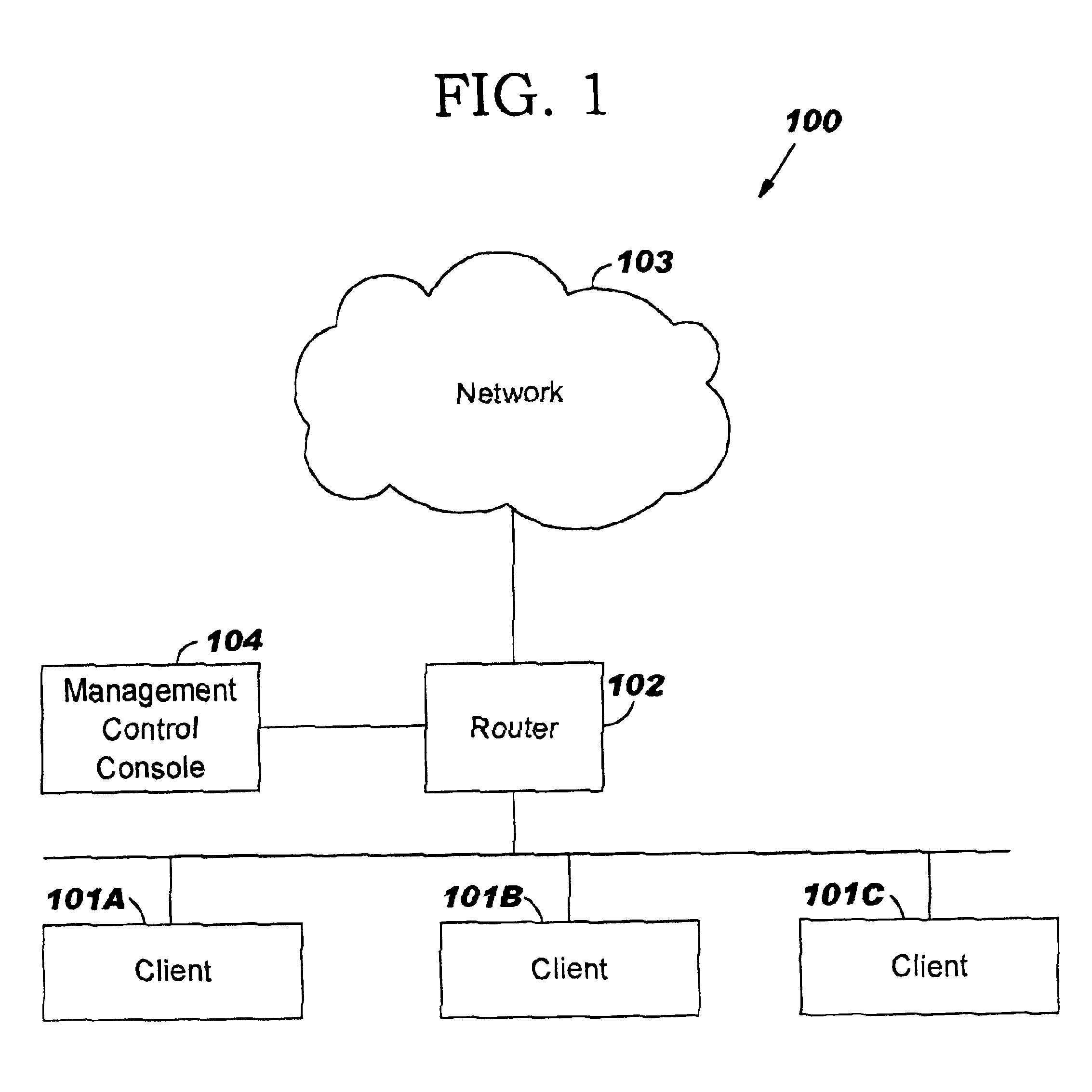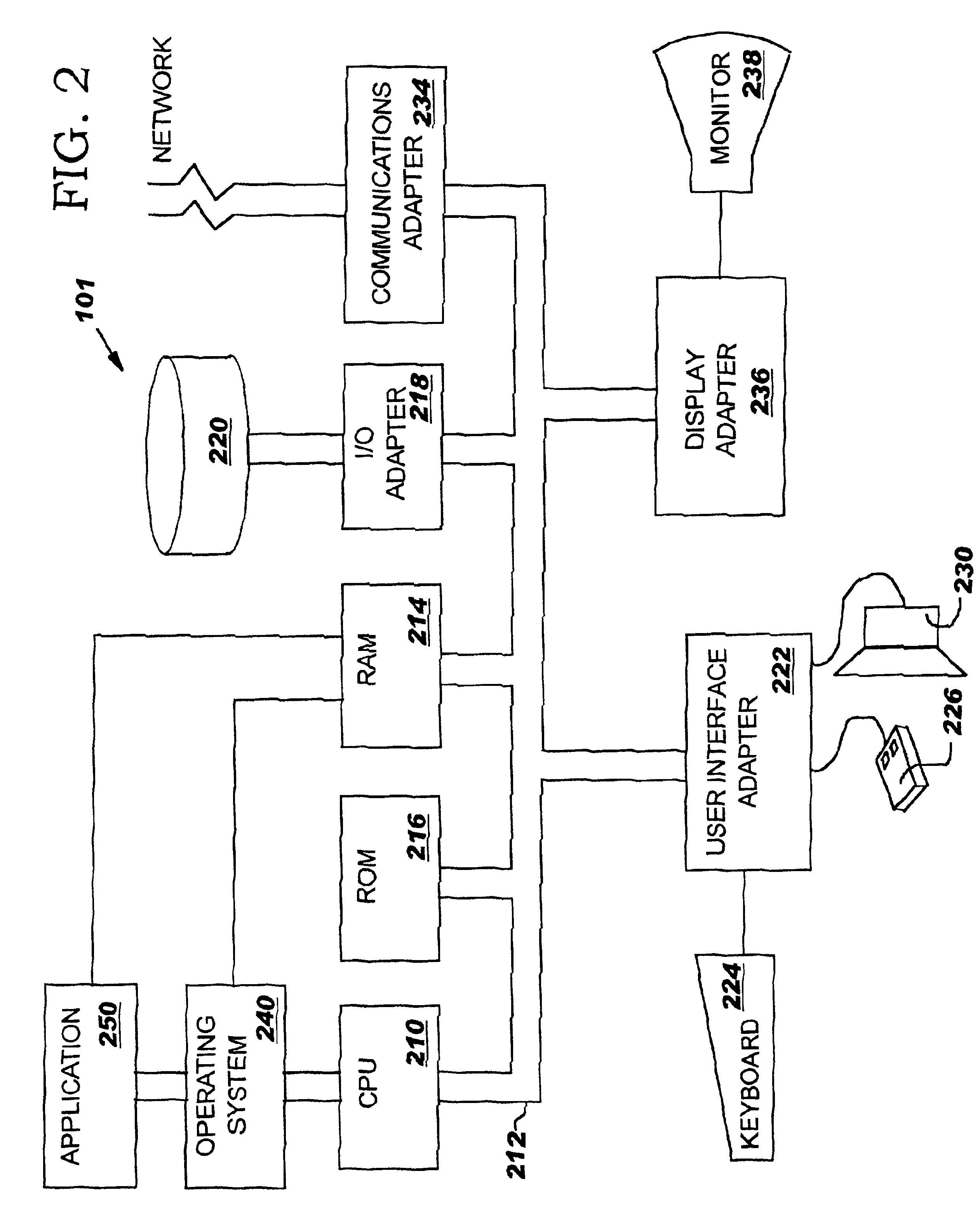Detecting network instability
a network instability and detection technology, applied in the field of monitoring network devices, can solve problems such as data being discarded or lost, devices processing packets at a slower rate or even crash, and devices receiving an inordinate amount of packets to be processed exceeding their processing capacity
- Summary
- Abstract
- Description
- Claims
- Application Information
AI Technical Summary
Benefits of technology
Problems solved by technology
Method used
Image
Examples
Embodiment Construction
FIG. 1—Network System
[0031]FIG. 1 illustrates an embodiment of a network system 100 in accordance with the present invention. Network system 100 may comprise one or more clients 101A-C coupled to a router 102. Clients 101A-C may collectively or individually be referred to as clients 101 or client 101, respectively. A more detailed description of client 101 is provided below in conjunction with FIG. 2. A more detailed description of router 102 is provided further below in conjunction with FIG. 3. Network system 100 may further comprise a network 103 coupled to router 102. Router 102 may be configured to forward packets of data issued from clients 101 to network 103. Network 103 may be a Local Area Network (LAN), e.g., Ethernet, Token Ring, ARCnet or a Wide Area Network (WAN), e.g., Internet. Network system 100 may further comprise a management control console 104 (also referred to as a central management station) coupled to router 102. It is noted that the connection between clients ...
PUM
 Login to View More
Login to View More Abstract
Description
Claims
Application Information
 Login to View More
Login to View More - R&D
- Intellectual Property
- Life Sciences
- Materials
- Tech Scout
- Unparalleled Data Quality
- Higher Quality Content
- 60% Fewer Hallucinations
Browse by: Latest US Patents, China's latest patents, Technical Efficacy Thesaurus, Application Domain, Technology Topic, Popular Technical Reports.
© 2025 PatSnap. All rights reserved.Legal|Privacy policy|Modern Slavery Act Transparency Statement|Sitemap|About US| Contact US: help@patsnap.com



